Gallery Spotlight: Early Flight
The National Air and Space Museum spotlights the upcoming Early Flight exhibition, one of eight new galleries due to open Oct. 14.
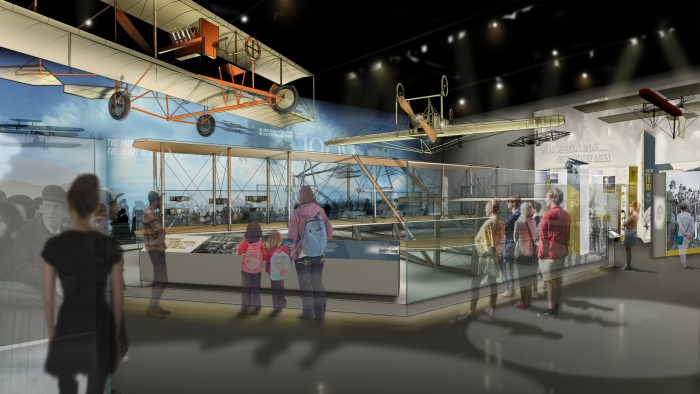
Between the first flights of the Wright brothers in 1903 and the outbreak of World War I in 1914, the airplane grew from an ancient dream into a reality that would shape the future. Although winged flight proved far more difficult than balloon flight that came before it, brilliant experimenters laid the foundation for success during the 19th century.
Artifact Spotlight: The Wright Military Flyer
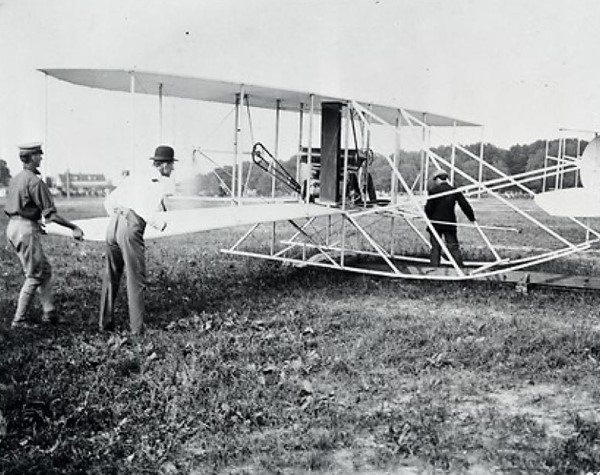
The world’s first military airplane, the 1909 Wright Military Flyer, is the centerpiece of the Early Flight gallery. The United States Army conducted flight training at nearby College Park, Maryland, and at Fort Sam Houston in San Antonio, Texas, in 1910, and Wilbur Wright taught the first three American military aviators to fly in the airplane. Pictured here, the Wright brothers ready the aircraft for flight, as Wilbur (in a white shirt) watches as his brother Orville (between skids, in black) makes final adjustments to the Flyer before takeoff in Fort Myer, Virginia. The Army gave the airplane to the Smithsonian in 1911.
Person Spotlight: Harriet Quimby
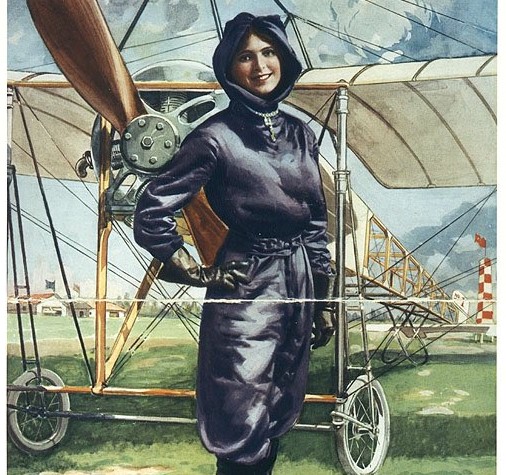
Harriet Quimby, who had worked as a newspaper reporter, actress, and screenplay writer, was the first American woman to earn a pilot’s license. A favorite with reporters and photographers, she flew her Blériot XI monoplane from England to France, in 1912, becoming the first woman to fly the English Channel. The Early Flight gallery shares the stories of pioneering aviators like Quimby. Learn more about her.
Story Spotlight: The Military Gets Its Wings
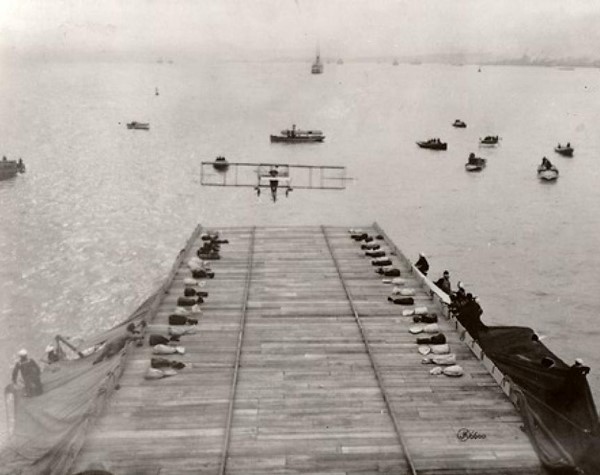
As war clouds gathered on the eve of World War I, European nations decided to invest heavily in a new unestablished weapon, the airplane. For many countries, the Wright Military Flyer became an important starting point for military aviation. The United States did not invest the same amount of capital into aviation that many of its European allies did at the onset of the war, and by 1913, it ranked only 14th in spending on aeronautics. Read more on how the military became a major user of aeronautical technology.
Behind the Scenes Spotlight: Lifting the Blériot XI Into Place
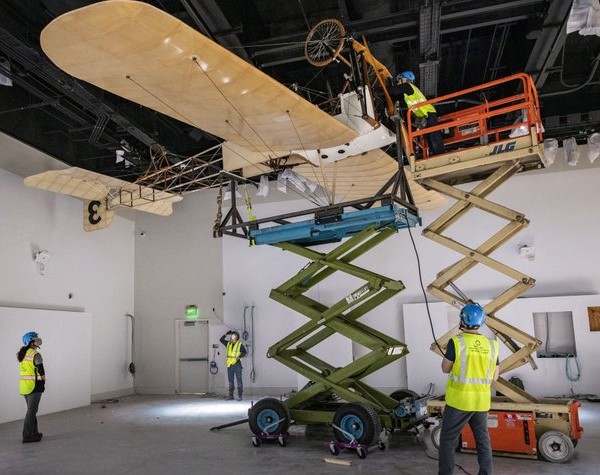
The Museum’s Blériot XI belonged to Swiss aviator John Domenjoz, who earned the name “upside down Domenjoz” for his aerobatic flying. The Blériot XI first appeared in the spring of 1909 and became one of the most popular monoplanes produced before World War I. It was licensed for other firms to build and was popular with European armies and even do-it-yourself builders in both Europe and America.
This behind-the-scenes image shows the Blériot XI being installed upside down in the Early Flight gallery. See more behind-the-scenes photos of the gallery’s construction.
This post is part of a series of Spotlights originally published by the Smithsonian’s National Air and Space Museum.
Posted: 15 September 2022







